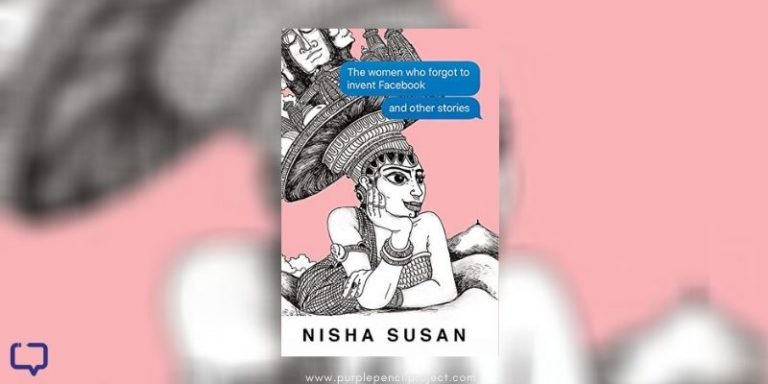Neha Kirpal reviews ZardoZi: Stitched with Love by Debasmita Dasgupta (published by Harper Children’s, 2024).
ZardoZi: Stitched with Love by London-based award-winning graphic novelist, film producer and screenwriter Debasmita Dasgupta and edited by writer and independent children’s bookmaker Rajat Mittal is a heart-warming new picture book about a ten-year-old boy called Zi who loves embroidery.
One morning, Zi wakes up after having had a bad dream in which he feels like he has found something precious but doesn’t remember what it is. Excellent at craft and stitching, which he finds meditative, Zi loves spending time doing exquisite embroidery. However, most people around him don’t seem to understand this. His father assumes that he wants to be an architect just like him. In school, too, his teacher asks him to try a more “boyish” extra-curricular activity like skateboarding – even though Zi doesn’t really enjoy it.
Further, his family members think that Zi won’t be interested in selecting wedding lehengas and saris for his sister’s wedding, as that would be too “girly” for a big boy like him. They suggest that he chooses a dark, sober suit for himself for the wedding so that he looks like a “charming, handsome man in black” – even though Zi personally prefers floral patterns. One day, he confesses to his secret pet, Bhanu, that he finally knows what he is searching for in his dreams – his voice. “My own voice! But no one wants to hear it. No one!” he exclaims. Two months later, Zi is still struggling with skateboarding.
Finding Your Inner Voice
But all that changes when his unconventional Naani arrives from the village in Murshidabad, where she lives. Having learnt the intricate zari-work from her mother, his Naani notices in Zi’s eyes a lot of patience and willingness to learn the tough art form. And so, she begins teaching him, and also gives him a notebook that has all her lovely zari-work patterns. “You have to centre your thoughts and orchestrate your finger movements to create fine thread-work,” she tells him.

Zi decides to present a Zardozi piece at his class exhibition and works with liquid zari-work over the next month. In the final chapter of the story, he musters up the courage to articulate his inner voice and tell everyone the truth – that he does not like skateboarding; instead, he wants to do embroidery, which he loves. His parents are shocked to hear this and question him – to which he explains that embroidery makes him happy. He also surprises them by showing them his black coat for the wedding, which he has transformed by transcribing beautiful floral patterns on it.
Recommended Reading: Indira by Devapriya Roy: A Graphic Novel For all
Zardozi in Focus
Needless to say, the book provides an insight into the delicate art of Zardozi. In the Editor’s Note, Mittal elaborates more on Zardozi (“Zar” = “gold” and “dozi” = “sewing”), a form of traditional embroidery which is believed to have emerged during the medieval period in Persia and later flourished in India during the Mughal era. “Traditionally, the artisans of the Zardozi craft were predominantly male. However, contemporary society mistakenly views embroidery as an effeminate activity. We often teach young girls embroidery as part of their upbringing and shun young boys who show an inclination for it,” affirms Mittal, who is also the founder of Project Boyish.

Favourite Quote from ZardoZi by Debasmita Dasgupta
Zari-work is tough. It’s like meditation. You have to centre your thoughts and orchestrate your finger movements to create fine thread-work.
Conclusion
Written in the form of a graphic novel, this slim picture book with short chapters is about breaking free from society’s expectations and embracing and staying true to oneself. Dasgupta dedicates the book to all those who choose to be different. The message is simply and effectively conveyed through the clear narrative of the story. In a world where we often make the mistake of stereotyping gender roles right from the time our children are young, ZardoZi comes as an important reminder for us to examine patriarchal norms and their impact on individuals of all genders.
Recommended Reading: In Conversation With Charbak Dipta
It is also a prompt for parents to listen to their children and pay heed to their likes, dislikes and instincts instead of just imposing their own dreams on them. “This notion that embroidery is a feminine hobby or art form is misplaced, as history shows. It is important to note that embroidery and craftwork are not exclusive to any gender. Yet, we forget this and allow our biases to rob our young ones of their dreams,” concludes Mittal.






















